How To Find Low-competition Keywords In 2024 [Tutorial]
Identifying low-competition keywords is similar to finding a juicy peach in a grocery store.
You will find that most of the peaches look great until you begin to bite into one that is tough.
The keywords are the same thing, you will never know what’s behind the scene.
A lot of keywords are difficult to rank with SEO due to heavy keyword competition.
Once you start looking closely and learning the difference between hard and juicy keywords, you can start finding low-competition low-effort keywords to go after.
- What Are Low-Competition Keywords?
- Low-competition Keywords: SEO Low-Hanging Fruit
- How To Find Low-Competition Keywords With High Traffic
- Estimating Keyword Difficulty
- Estimating Competition Level
- Identify Keyword Difficulty With Keyword Overview Report
- Bonus: Identify Low-Competition Keywords for SERP Features
- Conclusion
What Are Low-Competition Keywords?
There are fewer companies and websites competing overtly for high organic rankings with SEO for less-competition keywords.
It is a good idea to focus on these keywords since they have less competition.
It is possible to achieve your organic traffic goals by targeting low-competition keywords while writing helpful content for your website without relying heavily on off-page strategies or social media marketing.
Read also: How to find high-paying Adsense keywords
Low-competition Keywords: SEO Low-Hanging Fruit
Keywords with low competition and high search volume are the low-hanging fruits of SEO. Your website will receive traffic from searches that are neither too popular nor too crowded with competitors.
Your best chances of getting organic search traffic to your site are here. If you’re entering a new market or starting a new website, you want to focus on low-hanging fruit keywords to boost your SEO efforts.
Read also: Semrush Tutorial: How it works
How To Find Low-Competition Keywords With High Traffic

The keyword difficulty, competitive density, and volume metrics in our database help you find long-tail keywords quickly.
You can build a juicy keyword list on Semrush in just three easy steps — even if you’ve never done it before:
- Create an initial keyword list
- Develop a list of keywords
- Find keywords with low-competition, high-volume
Step 1: Find Your Target Keywords Spying On Your Competitors
You can start with the “Organic Research” on Semrush. Don’t you have the Semrush subscription yet? Try the 7-day free trial!
Here is the step-by-step guide for finding keywords low competition high search spying on your competitors:
- Visit Semrush Organic Research option
- Search for the competitor’s domain name
The keywords that your competitor’s website ranks in Google’s top 100 organic search results will be listed for you. As an example, let’s use TheLefTrough.com as a competitor in the golf sports niche.
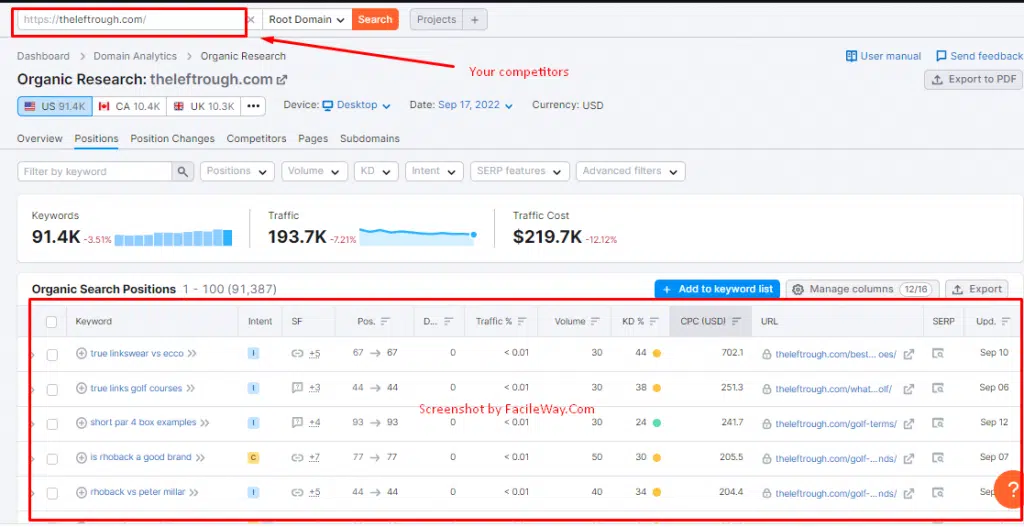
It is now possible to dig through their performance and see the search engine keywords that are driving their traffic.
Pay attention to the KD% (keyword difficulty) column. As a starting point, this is a measure of how difficult it is to compete for this keyword.
In this post, we’ll discuss KD% in more detail.
If you’re looking for more specific search terms that are relevant to your business, you can also filter for them with filters. The following screenshot shows how it looks when searching for keywords that include the word “Golf Shoes.”
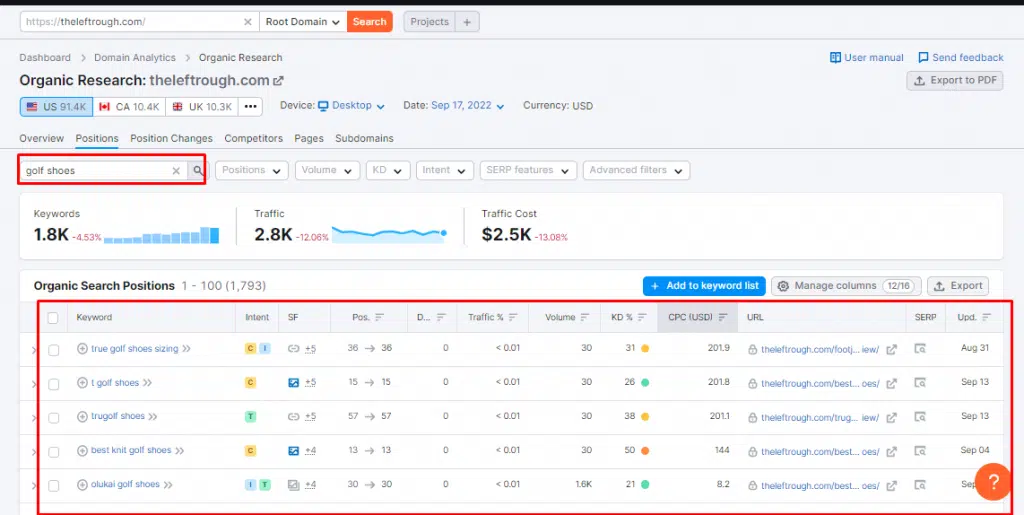
The KD% and volume filters, as well as even the number of words per phrase (for example, keywords containing four words or more), can be combined to find less competition, long-tail keywords.
If you want to save a master list of up to 1000 keywords, repeat this process for multiple competitors and send the keywords you like to the Keyword Manager.
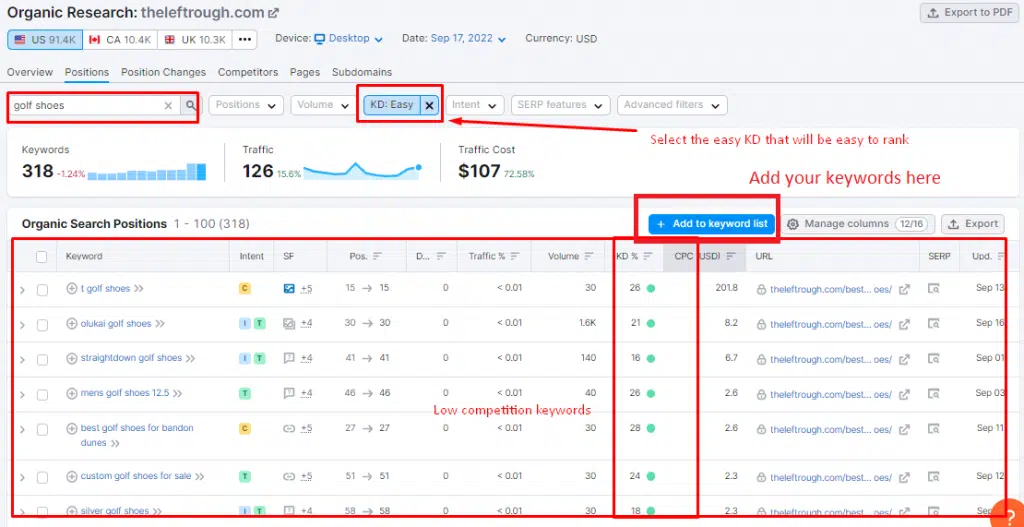
This is an example of an Organic Positions report filtered by KD%, then sent to the Keyword Manager as a new list.
Here’s the next tool you need to use: Keyword Gap
- Compare keywords between domains with the Keyword Gap tool to find more long-tail queries
- You can enter up to four competitors’ websites into the input fields and hit the compare button to compare them
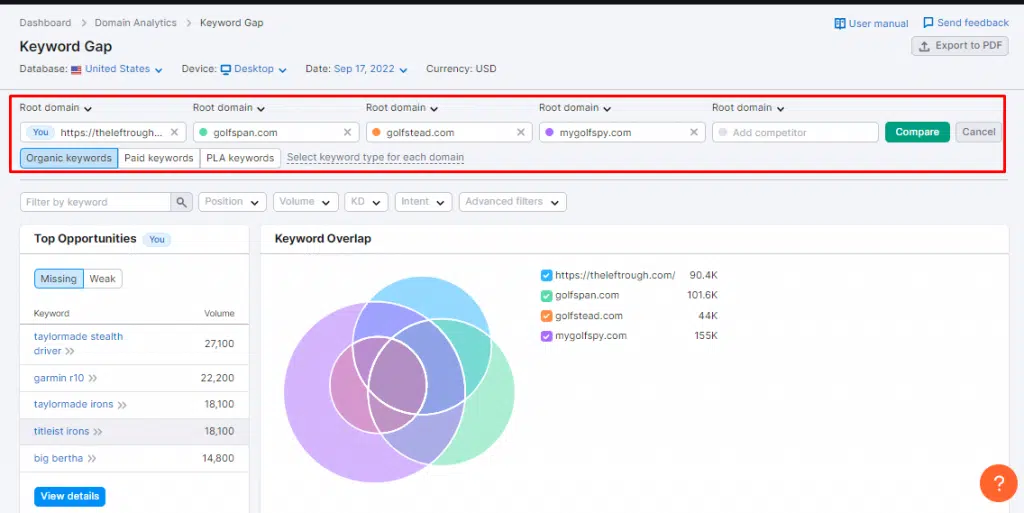
Here are three domains we took: TheLefTrough.com, GolfSpan.com, Gplfstead.com, and MyGolfSpy.com.
The list of over 220,000 keywords for the Golf Sport Niche was built in a few clicks.
Tip: You can use Organic Research’s Competitors tab if you don’t know the industry of your website.
To find the best opportunities for your site, use the missing, weak, and untapped filters.
This report can now be exported to the Keyword Manager so you can combine the keywords with your other exports to create a master list.
You will find even more keyword ideas in the next step and how will show you how to find keywords using this step.
Step 2: Find More High Search Volume & Low-competition Keywords
You can start with the “Keyword Magic Tool”. You can add more phrases to your list of low competition high volume keywords.
For keyword phrase matching, use the following method:
- Visit the Keyword Magic Tool
- You can search for a term from your initial list of search terms by typing it in and clicking Search
Your query term will be included in a list of expanded keyword phrases.
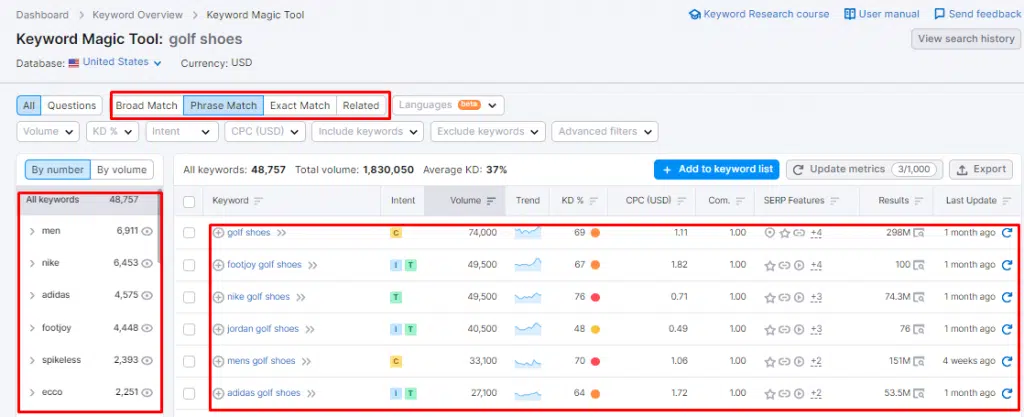
The next step is to find related keywords using the Related filter.
There will be a list of phrases that are semantically related to the query, but may not have the same phrasing but have similar results.
It would be a good idea to add some of these as well to your plan so that you are covered on all sides.
Use the Questions filter to find question keywords (which make great content topics). You will only see keyword phrases that contain who, what, where, when, why, or how.
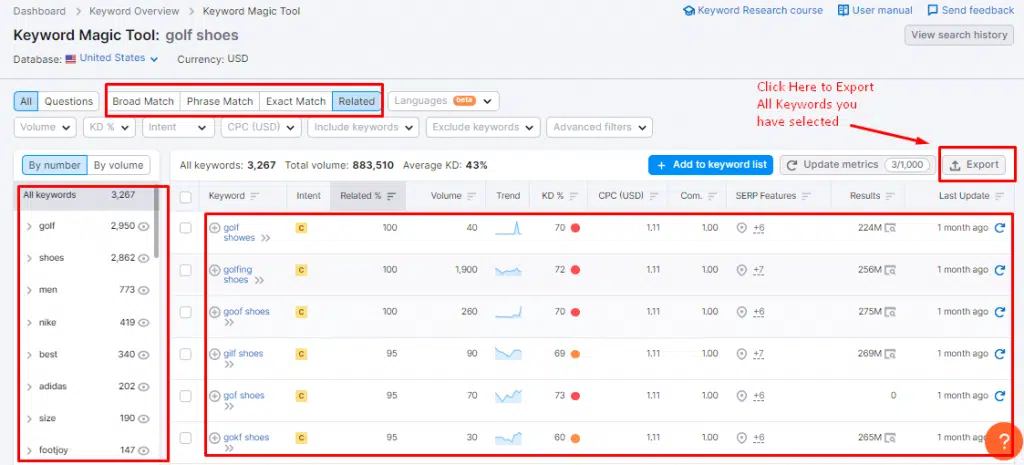
As you can see in the image above, KD% is still quite high. You’ll want to add a filter for lower difficulty if you see KD scores like this. We will discuss this in more detail in step 3.
Put all the keywords you want to target in Keyword Manager with your desired keywords.
Step 3. Filter The High Search Volume Keywords & Find The Less Competition Keywords
Your potential traffic can be determined by the average monthly search volume for each keyword. Your website will receive more traffic if your rankings for high-volume search terms are high.
The most popular keywords, however, are highly competitive. If you can’t rank for a keyword, there’s no point in trying. So get search volume for keywords and the competition level of a keyword must be balanced.
The following are two ways that Semrush can help you find keywords with low competition high traffic keywords list:
1. Keyword Difficulty (SEO)
The difficulty of organically outranking the websites and webpages ranking in the top spots on Google for a particular keyword.
2. Competition Level (PPC)
Pay-per-click advertising density for a given search phrase. It is often used to assess organic search competition, although it is largely concerned with paid search competition
If you go to the Keyword Manager, you should find a column for each metric. To find success, you’ll need to look closer at both metrics to find the best keywords to start targeting.
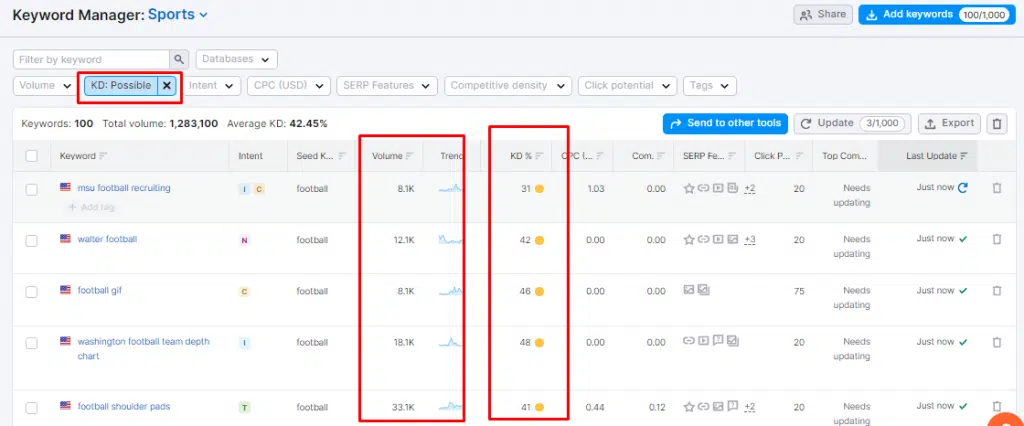
Estimating Keyword Difficulty
It shows you how difficult it would be to overtake a competitor’s position in the top 100 of Google with a particular keyword (from 1-100%).
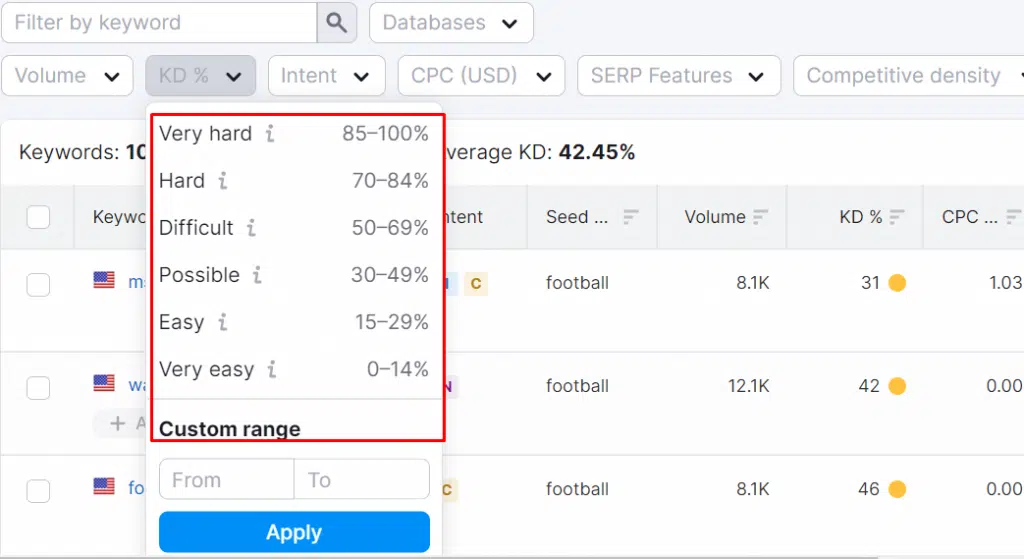
If your percentage is higher, you’ll need to put more effort into outranking your competition:
1. Above 69%:
These are the most difficult keywords. You’ll need to invest a lot of time and effort in SEO and link-building before you’ll be able to make it into the Google Top 20. If you are just starting your site, it might not be a good idea to focus on highly competitive keywords.
2. From 50-69%:
Keywords that are average in difficulty. You will have a hard time entering the Google Top 20 with these keywords as well. If you have high-quality content and relevant backlinks, you might be able to take over your competitors’ positions in time.
3. From 30-49%:
When you’re just starting, you should focus on keywords that are easy to rank for.
4. Below 30%:
It is easiest to rank for keywords with very low search volume or very specific search intent.
You will need patience and hard work to discover low-competitive, high-volume keywords.
The good news is that if you can find a solid list of these terms and implement them throughout your site, you’ll have a very good chance of ranking in these high-volume searches. You can also find the zero competition keywords using this feature.
Estimating Competition Level
The scale can be assumed to be roughly the same when estimating the Competition Level. The main difference here is that the metric measures the density of paid advertisers rather than the amount of traffic.
If the score is close to 1, more advertisers are bidding on this keyword. This means that standing out in the search results would be more difficult.
1. Above 0.80:
Advertising for these keywords is highly competitive, so traffic is likely to go to paid results. It’s possible to infer that a keyword with a high density of advertisers has some intent to buy.
2. From 0.60-0.80:
Keywords with average advertiser density. Advertising on any of these keywords won’t be a quick win if your organic efforts don’t work out.
3. Below 0.60:
Keywords with the lowest advertiser density. If they are not profitable to advertise on, they may be under the radar of most competitors in your niche. Consider this when dedicating.
You can refer to the suggested ranges above, but keyword with KD% under 50 offers the best opportunities. You should start by looking for keywords in the 40s, 30s, and below that are relevant to you.
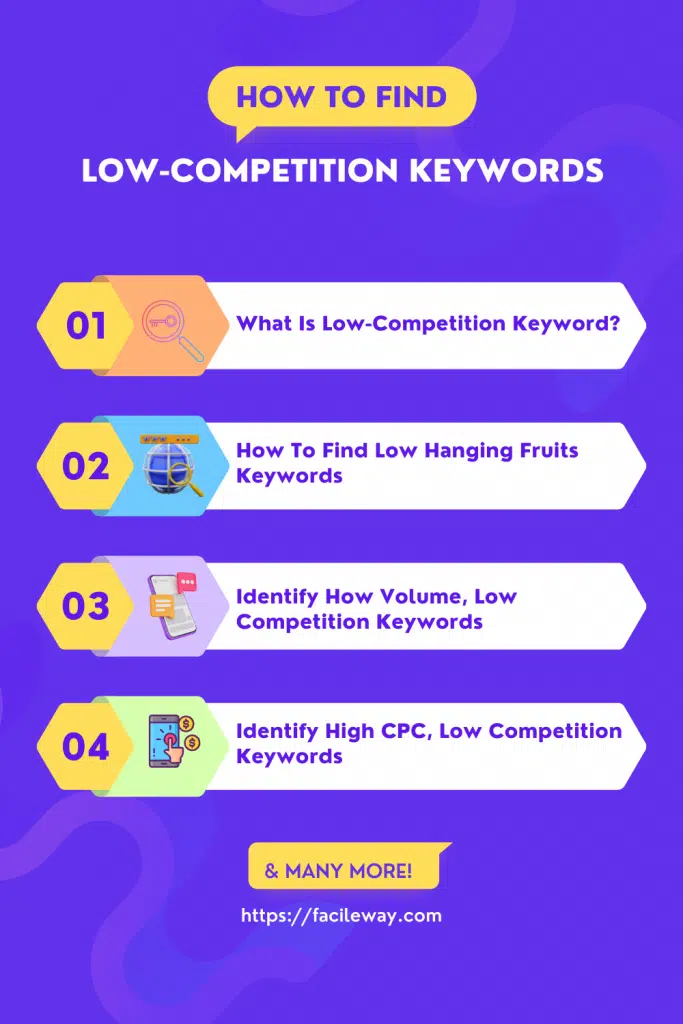
Think About Search Intent
You shouldn’t assume that just because a keyword has low competition and a high volume, it’s right for your target audience.
There are four main types of search intent. These include:
- Informational
- Navigational
- Transactional
- Commercial
If you are competitors have higher traffic than your website, you should definitely check these statistics. These stats will help you to understand how you should optimize your blog with informational, navigational, transaction, and commercial content and what should be an ideal percentage of it.
As you can see TheLefTrough.com have published articles according to the following search intent:
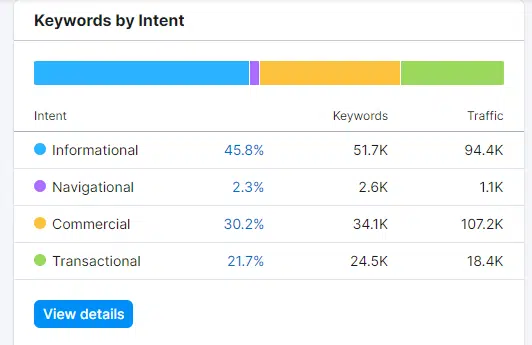
Let’s say you find a keyword with tons of traffic and no competition.
Isn’t that great?
I don’t think so. The searchers who use that keyword aren’t seeking your site if it’s a navigational search query for another brand.
You could also include a keyword in your list if you find a high-volume search query regarding a service you offer with low competition.
It’s important to remember that search intent can also affect who you target.
Factor in CPC
Is it possible to rank a term with low competition, but low volume? Many high-volume keywords are already being targeted by many companies online, so low-competitive keywords will have relatively low volumes.
It’s fine!
Consider the CPC as an indication of the keyword’s value.
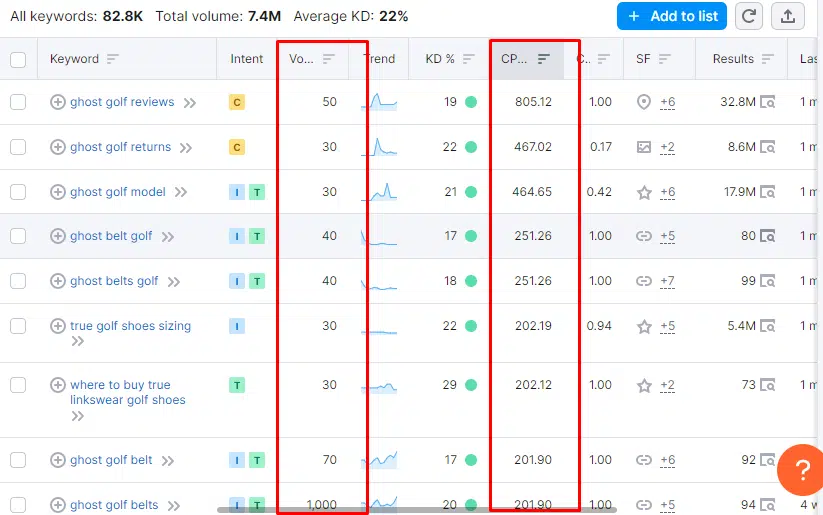
The cost-per-click is how much an advertiser pays for clicking on their ad based on their keyword. The term refers to paid ads. You can use it with low competition to find ready buyers.
This feature also helps to find the high CPC keywords list. It’s never been so easy to find the low competition high CPC keywords before Semrush.
You might have a highly relevant keyword with only 30 searches. The competition is low, and the CPC is high which means you consider choosing the keyword.
Identify Keyword Difficulty With Keyword Overview Report
It is possible to estimate keyword competition in bulk with the Semrush Keyword Overview. You can enter up to 100 keywords on the main page of this tool.
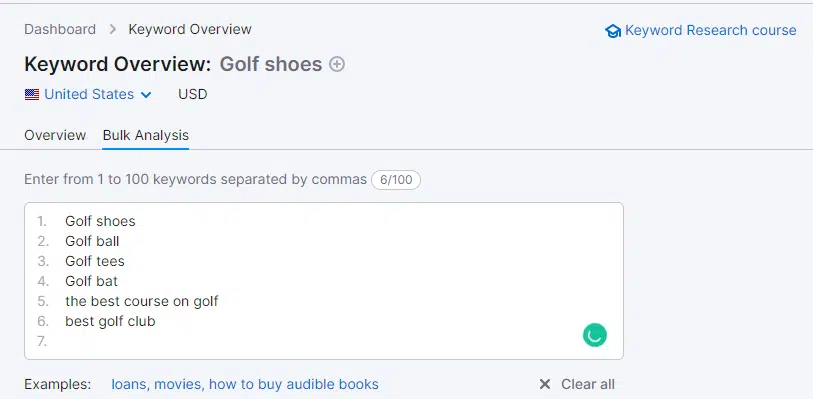
You may have a keyword list exported from Google Search Console or a list of keywords you already rank for. The difficulty of each keyword can be quickly viewed by dropping that list in here.
You can view the keyword difficulty of up to 100 keywords at once from the Keyword Overview homepage. You can enter one search term per line, choose your regional database, and click Analyze.
You will receive a report that includes your unique keyword batch’s KD scores, volume, and CPC.
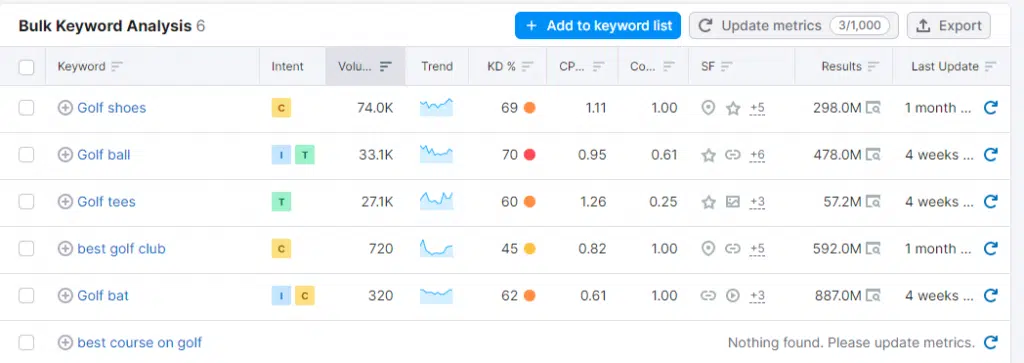
Bonus: Identify Low-Competition Keywords for SERP Features
There is a great opportunity in low-difficulty keywords with Featured Snippets on the SERP since you will be able to:
- Take up more space at the top of the SERP
- Look trustworthy to your audience by providing them with information faster
- This is theoretically easier to acquire than a keyword with a high difficulty level
The Bulk Keyword Analysis also lets you see which keywords trigger SERP features such as Featured Snippets and Instant Answers.

Read also: 16 Best Adsense Alternatives
Conclusion
Driving huge traffic becomes easier if you can find high search volume but low competition keywords for blog. This is the best start-up for startups, new websites,s, and domains with a low domain rating.
If you practice two or three times, you can master this skill amazingly. Mastering keyword research for Low-hanging fruits will save huge money on link building.
Because, if you can find your target keywords with low competition, you can easily rank your content without any Backlinks.
I hope now you know how to find low-competition keywords in just a few steps and launch your business website right away!
So what you have learned today? Let’s have a look-
- Spying on your competitors to find the keywords with low competition
- How to find low competition keywords list using seed keyword
- How to find high CPC but low competition keyword
- How to identify Low-Competition Keywords for SERP Features
- What is Search intent and how it works?
- How to find juicy low-competition topics no one else ranks for!
Please share this article with your friends who wanna launch their business online and let them learn how to find low-competition keywords with high traffic.




![5 Simple Tips To Create SEO-Friendly Content [2024]](https://facileway.com/wp-content/uploads/2022/02/Create-SEO-Friendly-Content-768x432.png.webp)
![Keyword Cannibalization Impact On SEO: [How To Fix It]](https://facileway.com/wp-content/uploads/2023/07/Keyword-Cannibalization-Impact-On-SEO-768x432.png.webp)

